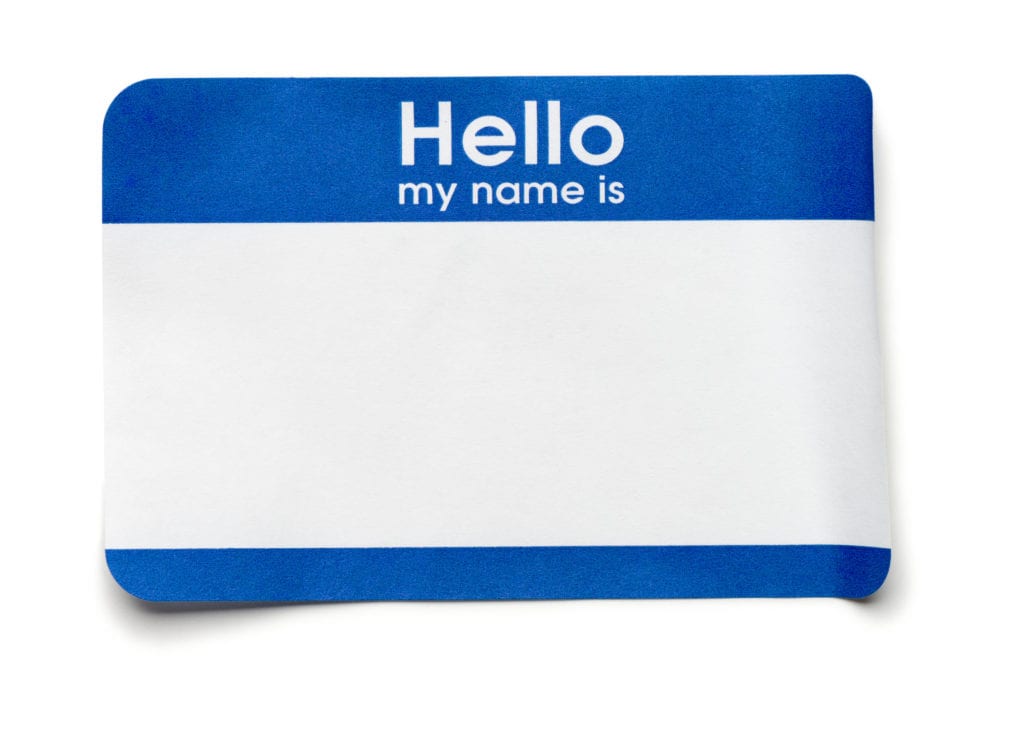

As an and expert and an edupreneur, you are in the business of selling knowledge. Learners have a variety of considerations when they’re choosing a learning experience, including subject matter, pricing, course length, and accreditation, but primary among them is whose lessons they’re buying. So, before you sell your courses or other products you have to sell you.
Building a personal brand is a key strategy for any edupreneur. The right branding improves your status in your field, and becoming the go-to authority on your subject ensures your offerings are always in demand. Personal branding thus impacts every aspect of an edupreneur’s business, from generating leads to positioning yourself as a thought leader, not just teaching your subject but helping shape and steer it.
And personal branding is rapidly becoming more important that ever in the age of ChatGPT and other forms of artificial intelligence. Simply by typing well-formed questions into a chat box, the average person can now get very detailed information and insights on even the most niche topics. For people to turn to you instead of or in addition to what they will be able to get on their own, you have to stand out. And your brand is a big part of doing that.
Of course, as with any marketing practice, personal brands have pros and cons. The very aspects that make personal branding so appealing to edupreneurs, such as the intrinsic association between you, personally, and your business, can make it harder to expand, diversify, or separate yourself from your brand without immediately devaluing it. Companies usually have greater longevity when they’re not dependent on a single person. Apple survived Steve Jobs, for example, and Amazon will likely outlive Jeff Bezos. On the other hand, I suspect the billion-dollar Kardashian-Jenner empire won’t fare so well in the long-term.
Overall, though, the upsides of establishing a strong personal brand greatly outweigh the downsides. So, in this post we’ll take a look at the ins and outs of creating a personal brand and consider five approaches you may not have heard of before.
How building a personal brand can help edupreneurs
When it comes to edupreneurial ventures, building a personal brand is often the best way to advance your reputation. Studies, including the 2017 Consumer Content Report from social content marketing platform Stackla, consistently show that consumers crave authenticity. A third of consumers trust influencers over brands, and 84 percent of millennials actively distrust advertising and business messaging.
You can see this trend play out across social media with CEOs and executives who have built successful personal brands. Elon Musk has 125 million Twitter followers. (Yes, even now.) Tesla has only 14 percent of that, at 19 million. Richard Branson has 12.6 million followers, while his Virgin empire, combined across almost 40 separate Twitter accounts, including everything from Virgin Galactic to Virgin Active Australia and Virgin Radio Oman, has a total of 3.3 million followers, or 26 percent of Branson’s total. (For the curious, the most popular account is Virgin Atlantic, with 663 thousand followers. The least popular is Virgin Radio Chilled UK, with 1711.)
When you speak for (or in place of) your company, you build subject authority, which leads to greater demand and higher rates for you personally and – by extension – your courses, coaching, and other offerings. And, having a strong personal brand tends to create a “rich get richer” effect: it empowers you to can expand your expertise as a speaker and educator, or grow your business by generating opportunities in new markets through partnerships with other entrepreneurs.
Subject matter experts benefit most from branding
A personal brand is built on the premise that you’re an expert in your field—maybe the expert. The broader your field, the harder it becomes to gain that kind of authority. Niching down has long been sound business advice, enabling emerging entrepreneurs to build their personal brand in a smaller community where they’re more likely to be noticed. For example Bill Nye has cornered science education, Sir David Attenborough has natural history, Neil deGrasse Tyson, astrophysics.
These educators became household names by focusing on one subject area, but there are countless others below them who have niched down even further. Steve Irwin was a passionate conservationist who educated the public about all manner of Australian wildlife, but to most he will always be “The Crocodile Hunter,” and it was his strong association with a single species that built his name and enabled him to expand his platform as his career grew.
Niching down might seem counterintuitive because it shrinks your target audience, but there is more value in being noticed by a thousand people than ignored by a million. Learners looking for educators want to study from the best, and often what people want to learn is very specific. Does a learner really want to know absolutely everything that can be done with Microsoft Office, or do they only need Excel knowledge? Perhaps they don’t need to know everything about Excel, but just how to master pivot tables. The further down you can niche, the easier it becomes to become an authority.
It’s easier to become the premier expert in a field that doesn’t already have a thought leader. Niching down enables edupreneurs to closely target their subject in order to fill a void. That’s why we have canine behaviorists and nutritionists and groomers and walkers rather than generic “dog experts.” The greater and more specific your subject matter expertise, the stronger your reputation becomes. And, as already suggested, as your brand increases you will naturally find opportunities to expand your influence – to move from being a big fish in a small pond to a big fish and in a somewhat larger pond. If you do personal branding right, both you and your pond keep growing.
How to build your personal brand
Building a personal brand begins with getting the basics in order. I’ve blogged before about how to elevate your expertise as an edupreneur. Start by reviewing your online presence and curate it with your learners in mind. Is your website attractive, easy to navigate, and clear to its purpose? Is your social media presence professional and subject appropriate? Do you blog consistently, or do guest posts and webinars to build your name?
Generating an online (and offline) presence in your field is critical to both starting your career as an edupreneur, and building your personal brand. Good branding is self-generating: you want learners who hear your name to know immediately who you are and where to find you, and you want people searching your field to be led straight to your name.
Indeed, the goal of branding yourself online is to rank highly in search engine results for your niche, because when you make yourself synonymous with your field, new learners come to you. This is vital to growing a successful edupreneurial business, because the less time you spend prospecting and searching for leads, the more time you can devote to your online courses and learners.
Once you’ve got the basics in place, it’s time to elevate your personal brand using innovative methods the competition haven’t considered. Try some of the following ideas and think outside the box to engage with potential learners in whole new ways.
The 5 personal branding tips you haven’t heard before
1. Share your journey
A potentially powerful first move is to admit you don’t know everything. (I certainly don’t!) The best educators are continually learning, and learners will find you more relatable as a teacher if you share your journey (and passion) with them. Instead of showing off the masterful food you’re creating for your cooking course, consider showing learners your experiments, the time you got up at 5 a.m. to visit a farmer’s market in search of new ingredients, or the mushroom foraging class you took.
The British chef, author, restaurateur, and cookery teacher Hugh Fearnley-Whittingstall did exactly this with his River Cottage TV series. What started out as a story of a man moving to the countryside and taking food back to its roots grew into a culinary empire and foodie phenomenon. Fearnley-Whittingstall now works as an environmental and animal welfare campaigner, shaping the future of the farming industry he knew nothing about when his show started.
Your enthusiasm for your subject will show as you share your experiences, good, bad, and ugly. Not everything has to go right, and not everything has to be picture perfect. Demonstrating your keen understanding of the learning process, and your ongoing commitment to it, bolsters your authenticity as an educator and makes you more approachable and relatable to learners.
2. Get personal—install a trigger
A personal brand can’t be all business. Marketing and investment guru Guy Kawasaki tweets about anything from politics and the environment to the books he’s reading and random news stories that catch his eye. Venture capitalist Mark Suster tweets about his kids, friends’ weddings, and hosts random AMAs when he’s bored on flights.
Social feeds full of cross-posted and automated updates about your latest blog post or course will turn prospective learners off. If they want to read your blog, they can subscribe and have it delivered to their reader or email without needing a dozen reminders on social media. Some promotion is necessary, but when you’re being social, be social.
This doesn’t mean you have to turn your private life into a public spectacle. Starting conversations and sharing news stories that you find interesting or amusing is enough to convey your personality and keep your social feeds interesting without compromising your privacy.
You can also go a step further and install a “trigger” that makes your followers and learners automatically think of you. Amazon ads expert Brian Meeks does this with guinea pigs (the furry kind). His love of guinea pigs is part of his social bios and content, referenced frequently in his book, and members of his online learning groups pay a “guinea pig tax” by posting pictures or videos of guinea pigs when they have questions or want his attention.
While pet rodents have nothing to do with promoting products on Amazon, the association between Meeks and guinea pigs is cemented in his learners’ minds, having the twofold effect of providing frequent, organic reminders of him (and his course), and keeping his online groups and social feeds active as people share photos and videos of guinea pigs with him.
Think about your interests. What trigger could you instill in your online audience that would serve as a shorthand reminder of you? It has to be something commonplace enough that learners will find relevant images and posts without having to search for them, but unique enough to remind them only of you. Cat videos won’t cut it, but opossums or narwhals might. And of course it doesn’t have to be animal-related. Maybe you’re on a lifelong quest to find the perfect cup of tea, or you’re passionate about fossil hunting. A trigger can be absolutely anything as long as it isn’t too generic or too obscure, but it makes you (and your personal brand) interesting and engaging.
3. Be restrictive to harness word of mouth
Another surprising method of building a strong personal brand is to be restrictive in who you share information with. While many edupreneurs start by offering free advice and training to demonstrate their expertise—by doing TED Talks, blogging about their subject, or running free-access groups on social media or online course platforms—doing the opposite can also be an effective way of generating interest.
Instead of throwing open the doors to all comers, launch your edupreneur career with small groups of handpicked test learners. Not only will these smaller groups help you hone your course and iron out wrinkles, you’ll signal that access to you is something exclusive.
Exclusivity works because people want things that are unobtainable. It’s a powerful psychological tool, and when you restrict early access to your course to a limited number of members, you’ll soon have a growing waitlist of learners eager to sign up and see what they were missing.
Being restrictive with early learners can also help your online course in other ways. Offering free or reduced-price access to a large number of people early on can devalue your course and make it difficult to monetize later. It’s also harder to give your learners your full attention if you have too many, especially if you’re just finding your feet as an edupreneur. Most importantly, by keeping your initial member groups small, you can develop strong personal relationships with each learner, ensuring they are happy with your course and go on to generate positive word of mouth publicity that keeps new learners coming in.
4. Get off the fence
If you’re using social media in a social way, you’ll soon realize it’s fraught with potential pitfalls. Because people use platforms such as Twitter and Facebook to talk about everything from what they had for dinner to the news of the day, it can be a divisive environment where picking the wrong side can result in ostracism.
Nonetheless, my advice is to get off the fence.
It’s impossible to be completely neutral online, and those who try rarely do their personal brand any favors. That doesn’t mean you have to comment on every hot button topic in your timeline, but when a news story impacts your field, don’t be afraid to have an opinion or to disagree with others. The art of polite disagreement can be tricky to master, especially in an all-text environment where it’s harder to gauge tone and meaning, but the academic world is full of competing discourses and professional differences, and there’s no reason you can’t engage online in the same way.
Being too agreeable or trying to take a neutral stance often comes across as insincerity, undoing the work you’ve put into building an authentic personal brand. People like to know where others stand, and part of being credible means having opinions you’re not afraid to defend. When people know where they stand with you, they’ll feel a stronger personal connection and trust your opinions more, confident they come from a place of sincerity and considered thought.
5. Predict demographic trends to stay ahead
My last piece of uncommon advice for building your personal brand is to look long-term at your target audience. As an edupreneur, you should have a good idea which demographics are most likely to take your course. Understanding your course demographics is vital to knowing how to reach and engage with learners, and you’ll find plenty of advice online telling you to look for Gen X on LinkedIn, over-50s on Facebook, and under-30s on YouTube.
Once you’ve identified your demographic and know where to find them, pay attention to what they’re talking about. Drill into Facebook groups, Twitter hashtags, and any other metrics you can find to figure out what captures your learners’ attention, be it a new movie release or a big sporting event. These social events might not be relevant to your course field, but if they’re relevant to your learners, you should still pay attention to them.
There is plenty of available information about the type of sports people watch, or which movie genres people prefer. By searching for overlap between your target demographic and common pop culture events, you can open whole new doors for building your personal brand and promoting your online courses. If you know your learners are likely to be football fans, start mentioning the Super Bowl ahead of time, and engage in online conversations in the lead up to it. Equally, if your learners are more likely to be movie buffs, tweet or post about the Oscars.
The purpose of building a personal brand is to connect with potential learners on a personal level. By sharing their interests, you garner their attention in a subtle way. Once they’re engaged, as long as your role as an edupreneur is clear from your online presence, natural curiosity will be enough for interested learners to find out more. And best of all, they’ll never feel like you were selling to them.
See also:
- 7 Ways to Elevate Your Expertise
- 5 Essential Methods for Sharpening the Saw
- How to Build an Audience
Image by Gerd Altmann from Pixabay
Table of Contents


